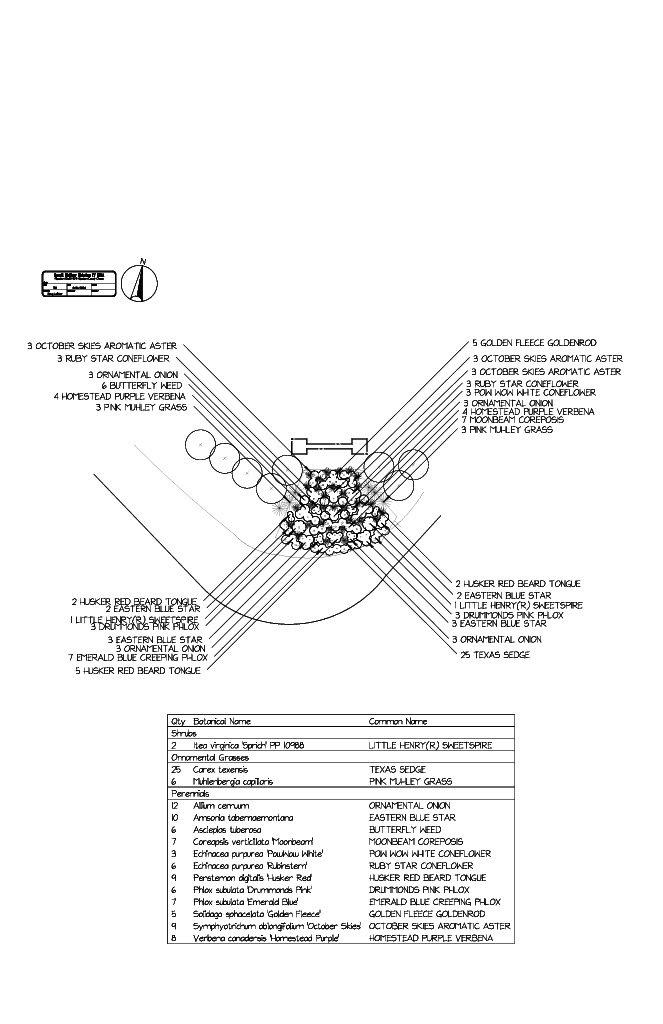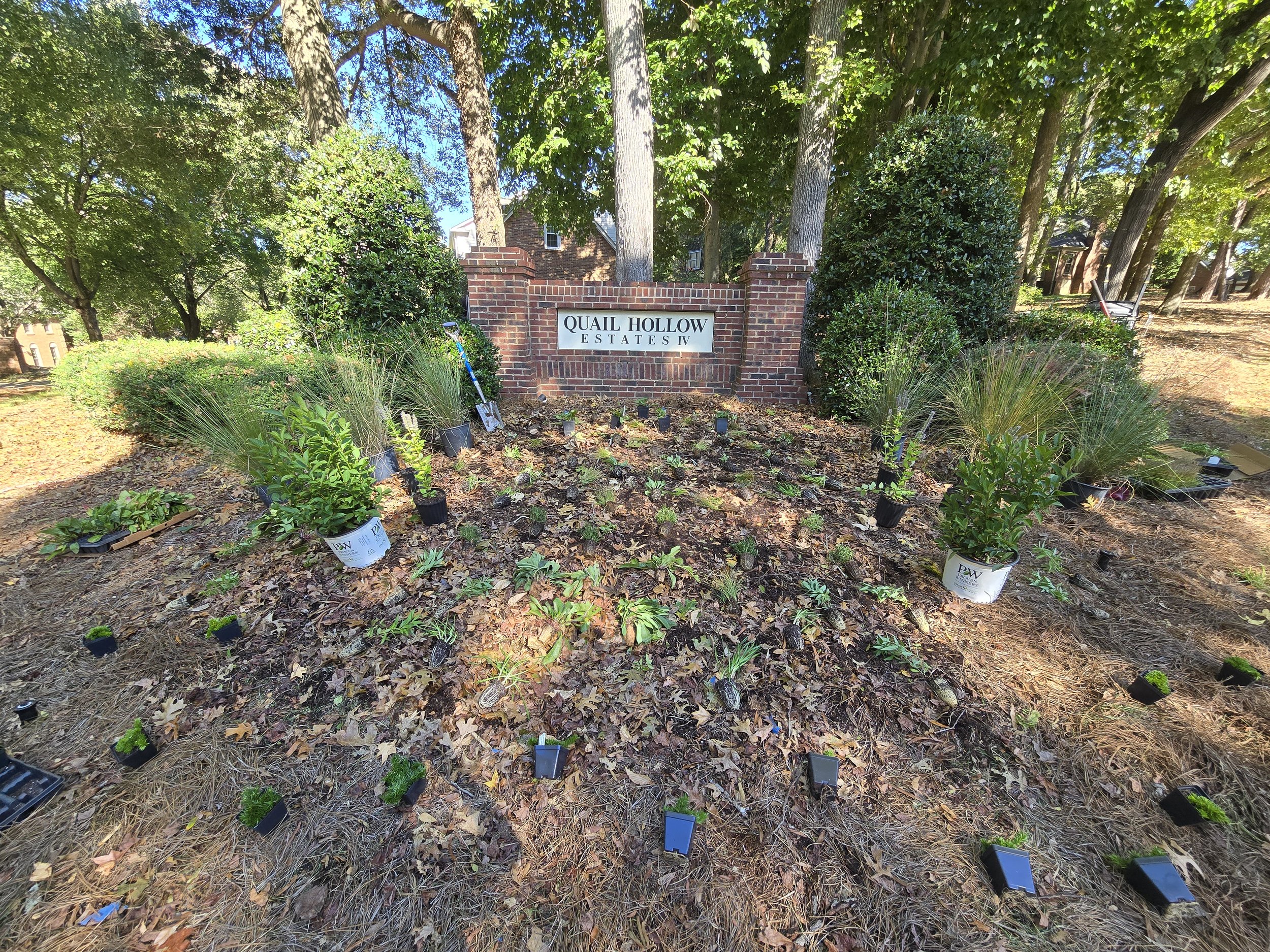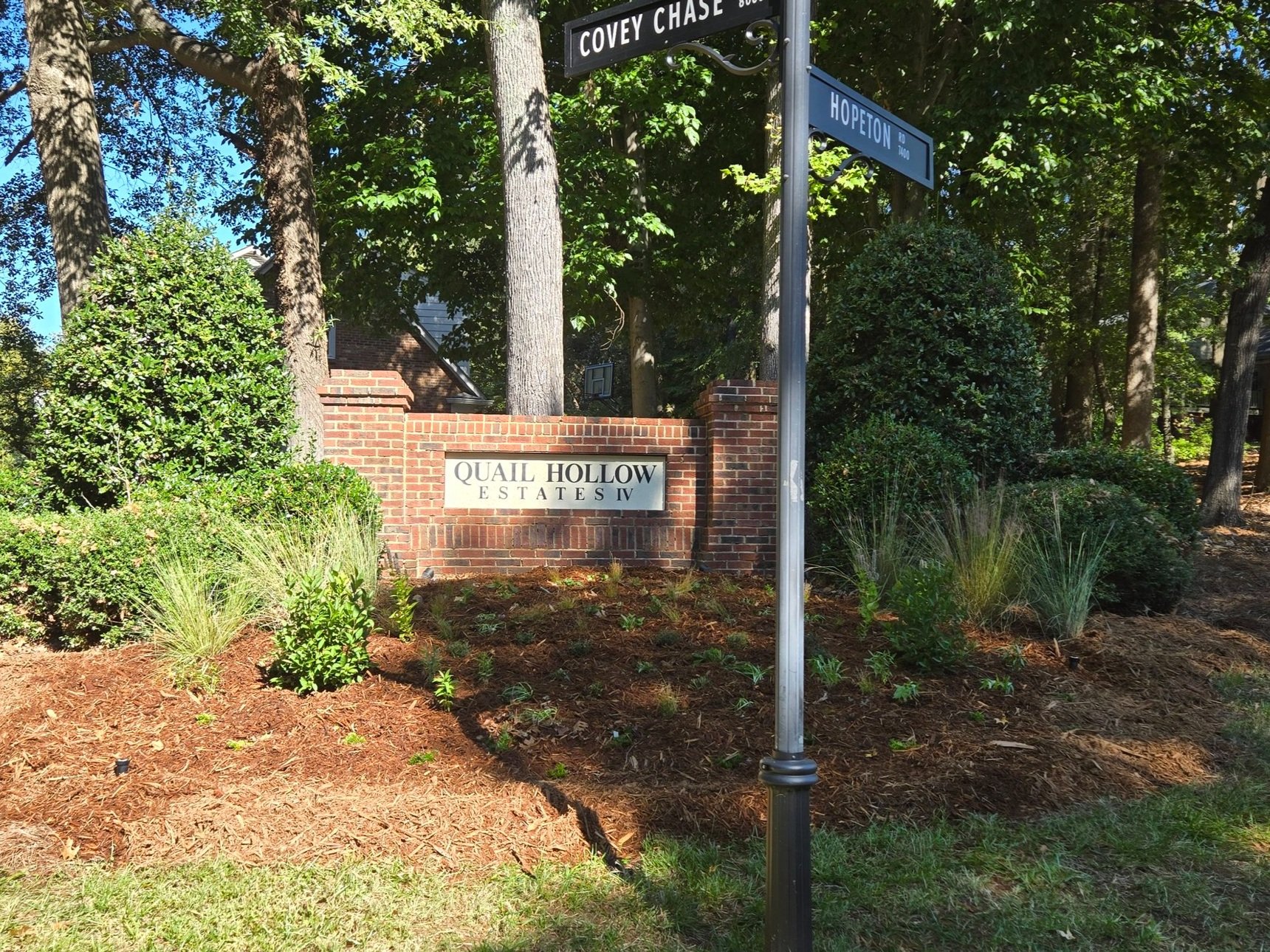A South Charlotte HOA had traditionally used annuals, replaced twice per year, for planters in front of their neighborhood entrance signs. Besides the annual expense of replanting the beds, the flowers were frequently damaged by deer. While bordered by trees, the 2 flower beds both received mid-day sun with one having morning sun and the other predominantly afternoon sun. For the planting, we treated both as full sun. For the planting, we chose a mix of highly deer resistant perennials that would provide blooms from April through October. To prevent blocking the view of the sign, plants closer to the sign were limited to 2’ tall while those further away from the sign or towards the edges were allowed up to 2.5’ tall.
Spring blooming plants included Moss Phlox (Phlox subulata), Eastern Blue Star (Amsonia tabernaemontana), Foxglove Beardtongue (Penstemon digitalis) and Little Henry Virginia Sweetspire (Itea Virginica). Summer blooming plants included Moonbeam Threadleaf Coreopsis (Coreopsis verticillata ‘Moonbeam’), Millennium Ornamental Allium (Allium ‘Millenium’), Blue Fortune Anise Hyssop (Agastache ‘Blue Fortune’), Butterfly Weed (Asclepias tuberosa), and Kim’s Knee High Purple Coneflower (Echinacea purpurea ‘Kims Knee High’). Fall blooming plants included Golden Fleece Goldenrod (Solidago sphacelata ‘Golden Fleece’) and Purple Dome New England Aster (Symphyotrichum novae-angliae ‘Purple Dome’). Within the design, the plant I would expect to be most susceptible to deer damage is the Purple Coneflowers. To protect them, we surrounded them with plants that had the highest level of deer deterrence…ornamental alliums and Butterfly weed directly next to them with Eastern Blue Star and Anise Hyssop further towards the front.
To provide texture and soften the look of the surrounding hollies, we added in 3 Pink Muhly Grasses on each side. Additionally, we planted Texas Sedge (Carex texensis), a low growing native grass like plant, in the space between the flowers to give it a more natural look and act as a weed suppressant.
To minimize cost, we installed most of the plants using landscape plugs (2-3” x 2-4” depending on the plant), which lowers the cost of the plants as well as the labor to install the plants. The downside to landscape plugs is that they are very small and it will most likely be late next Spring until a majority of the plants reach a meaningful size.
We look forward to watching this planting mature over the coming years.

Planter 1: Before - Spring

Planter 2: Before - Summer

Planter 1: Before - Spring

Planter 1: After - Post Planting

Design - used for both planters. Purple Dome New England Aster substituted for October Skies Aromatic Aster, Kim's Knee High Purple Coneflower substituted for Ruby Star and Pow Wow White Coneflower, and Blue Fortune Anise Hyssop substituted for Homestead Purple Verbena.

Planter 1: Mid Installation during plant lay out

Planter 2: After - Post Planting

Planter 2: After - close up

Planter 2: After - close up

After: small flowers interplanted with low growing sedges

After: Golden Fleece Goldenrod and Purple Dome New England Aster interplanted with Texas Sedge
